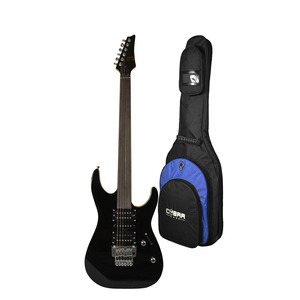Stringed musical instruments are a class of musical instruments that produce sound by vibrating strings. These instruments are found in virtually every culture and can vary widely in terms of size, shape, and the number of strings they have. They are an integral part of music across the world and are used in various genres, from classical to folk to contemporary music. Here's an overview of stringed musical instruments:
Also Read: Wind Musical Instruments
Classifications:
- Bowed Strings: In these instruments, the strings are set into vibration by a bow drawn across them. Examples include the violin, viola, cello, and double bass.
- Plucked Strings: These instruments produce sound by plucking the strings with fingers or a pick. Examples include the guitar, banjo, harp, and lute.
- Struck Strings: Sound is produced by striking the strings, either with hammers (piano) or mallets (dulcimer).
Number of Strings:
- Some stringed instruments have just one string (e.g., the monochord), while others can have dozens or even hundreds of strings (e.g., the harp).
Cultural Diversity:
- Stringed instruments are found in various forms across the world. For instance, the sitar and tabla in India, the shamisen in Japan, and the balalaika in Russia.
Construction:
- Materials used in the construction of stringed instruments can vary. Common materials include wood (e.g., spruce, maple), metal (e.g., steel guitar strings), and synthetic materials (e.g., nylon guitar strings).
Tuning:
- Stringed instruments are tuned to specific pitches. The tuning can vary widely, depending on the instrument and musical tradition. Some common tunings include standard guitar tuning (EADGBE) and the standard tuning for violins (GDAE).
Sound Production:
- When a string is plucked, bowed, or struck, it vibrates, creating sound waves. The sound is then amplified and shaped by the instrument's body, which can be hollow (e.g., acoustic guitar) or solid (e.g., electric guitar).
Musical Styles:
- Stringed instruments are versatile and are used in various musical styles, including classical, jazz, blues, rock, folk, and world music.
Notable Examples:
- Violin: A classical bowed string instrument known for its sweet, melodious tone.
- Guitar: A popular plucked string instrument used in a wide range of music genres.
- Piano: A large keyboard instrument with struck strings, used extensively in classical and contemporary music.
- Harp: A beautiful, multi-stringed instrument with a history dating back thousands of years.
- Banjo: A plucked string instrument commonly used in folk, bluegrass, and country music.
Evolution:
- Stringed instruments have evolved over centuries, with innovations in materials and design leading to the development of modern instruments.
Playing Techniques:
- Different techniques are used to produce various sounds on stringed instruments, such as fingerpicking, strumming, bowing, and using various playing positions and techniques to achieve different effects.
Overall, stringed musical instruments have a rich history and continue to play a vital role in music creation and performance across the world. They offer a wide range of tones and timbres, making them integral to the diversity of musical expression.
Best Stringed Musical Instrument
Determining the "best" stringed musical instrument is highly subjective and depends on various factors, including personal preferences, musical genres, and individual skill levels. Each stringed instrument has its unique characteristics and charm, making it well-suited for different purposes. Here are some of the most popular stringed instruments, each with its own merits:
- Violin: The violin is often considered one of the most versatile and expressive stringed instruments. It has a wide range and is a staple in classical music but is also used in various other genres, including folk, jazz, and contemporary music.
- Guitar: The guitar is arguably one of the most popular and accessible stringed instruments worldwide. Its versatility allows it to be used in numerous musical styles, from rock and pop to blues, classical, and folk.
- Piano: While not typically thought of as a traditional stringed instrument, the piano falls into the "struck strings" category. It offers a broad tonal range and is essential in classical music, jazz, and many other genres.
- Cello: The cello is known for its warm, rich tone and is a prominent member of classical orchestras. It's also used in chamber music and solo performances.
- Guitarra Española (Classical Guitar): The classical guitar has a unique and expressive sound, making it suitable for classical, flamenco, and various world music genres. Its nylon strings produce a mellow tone.
- Harp: The harp is known for its ethereal and angelic sound. It's often associated with classical and Celtic music but is also used in contemporary and experimental genres.
- Double Bass: The double bass, or upright bass, provides the deep, resonant foundation in orchestras and jazz ensembles. It's a crucial instrument in these genres.
- Sitar: Originating in India, the sitar has a distinctive sound and is used in classical Indian music, fusion, and experimental genres.
- Banjo: The banjo is closely associated with folk, bluegrass, and country music, known for its bright and lively sound.
- Erhu: A traditional Chinese instrument, the erhu produces a unique and haunting sound, often used in traditional Chinese music and contemporary compositions.
Ultimately, the "best" stringed musical instrument depends on your musical interests, playing style, and the kind of music you want to create. The best approach is to explore different instruments, try them out, and find the one that resonates with you the most. Each instrument has its beauty and can be the "best" for someone passionate about playing it.



No comments:
Post a Comment